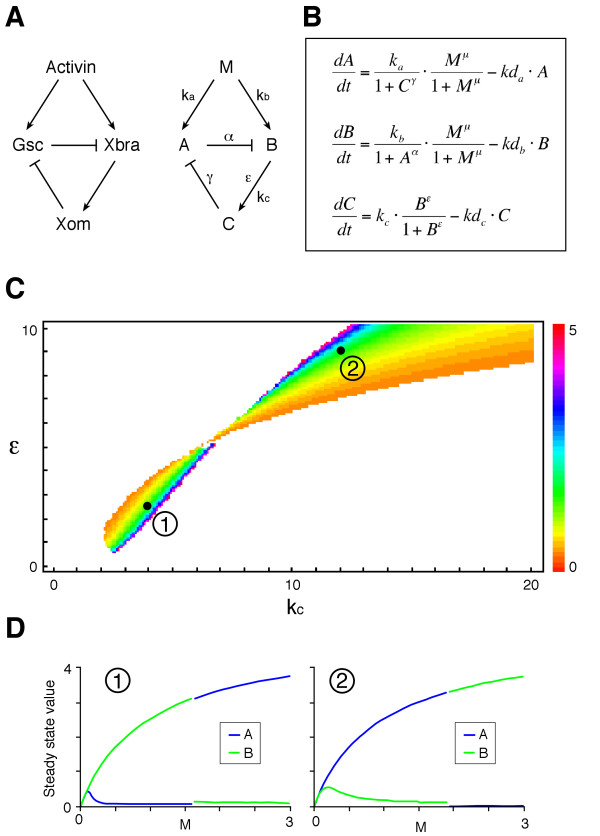Figure 5.
A mutually repressive network with an additional element. (A) The homeobox-containing transcription factor Xom mediates the repression of Gsc by Xbra. The gene network can be abstracted into a general network consisting of M, A, B and C as illustrated. (B) Ordinary differential equations describing the dynamics of the network in (A). ka, kb and kc are respectively the rates of synthesis of A, B and C. α and γ are the cooperativities of repression by A and C, ε and μ are the cooperativities of induction by B and M, respectively. kda, kdb and kdc are the decay rate constants. The dynamics of A and B are similar to those in Additional file 1 and show bistability. (C) Simulations were performed with ka = kb = 5 and α = γ = 3 (μ = 1, kda = kdb = kdc = 1). Threshold values of M, which are colour-coded, are plotted in the parameter plane (kc, ε). kc and ε determine how the value of C changes over time. There are two areas in the parameter plane where the system is bistable with a threshold. With smaller values of kc and ε (area 1), B is on and A is off with low M, and vice versa with high M at steady state. With larger values of kc and ε (area 2), A is on and B is off with low M, and vice versa with high M at steady state. (D) Typical examples (black dots in (C)) of steady state values of A and B plotted against M. Left panel, (kc, ε) = (4, 2.5). Right panel, (kc, ε) = (12, 9). If smaller values of kc and ε are favoured in nature, the above observation may explain why at steady state and with low activin Xbra (which corresponds to B) is on and Gsc (which corresponds to A) is off, and vice versa with high activin.

